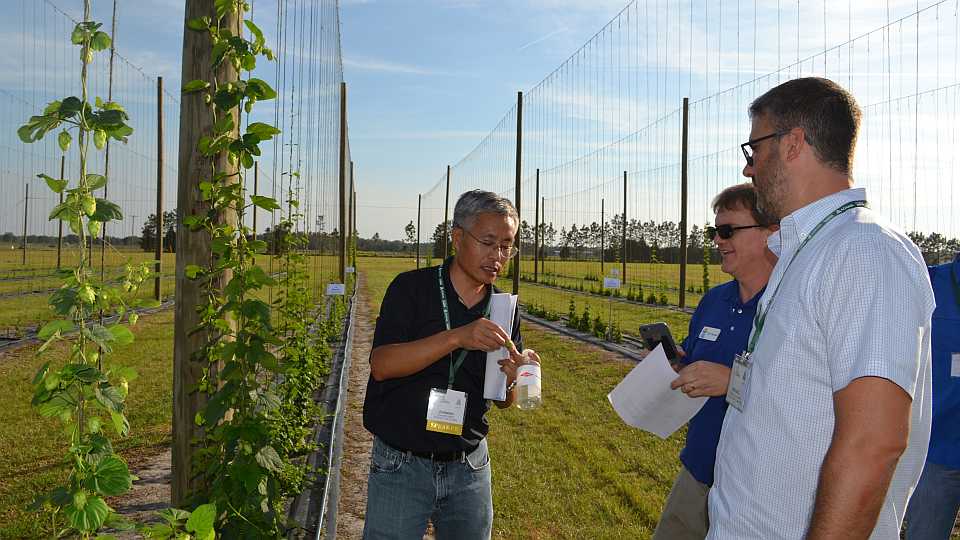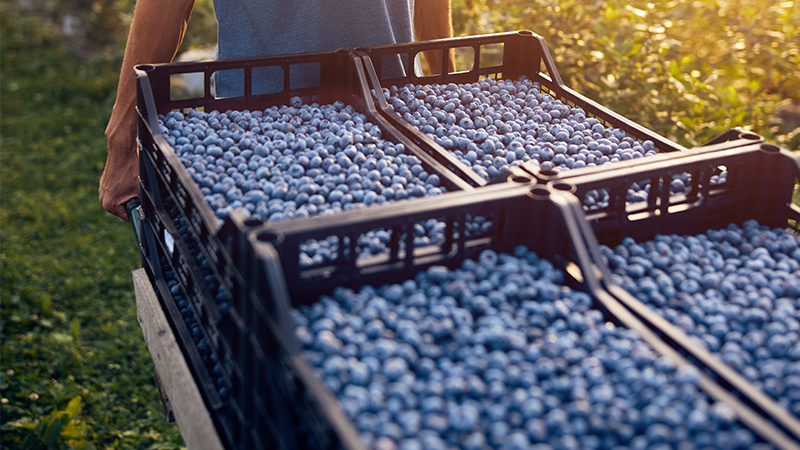Research on Florida Hops Forced to Dig Deeper

UF/IFAS Professor Dr. Zhanao Deng points out particulars of a ‘Cascade’ hop cone grown at the Gulf Coast Research and Education Center’s hop yard. Photo by Paul Rusnak
With any new endeavor, there’s bound to be some bumps in the road. University of Florida researchers are finding this out as they continue to explore hops as an alternative crop. Beyond lack of cumulative data, climate, and harvesting challenges, it appears now nematodes might be trying to worm their way in as a primary pest of the plants. The microscopic roundworms that live in the soil and attack the roots of plants could present a nagging problem for those trying to grow and study the emerging beer crop in the Sunshine State.
UF/IFAS scientists Zhanao Deng and Shinshuke Agehara have been leading the charge of growing hops at the Gulf Coast Research and Education Center (GCREC) in Balm. Recently, colleague Johan Desaeger spotted stunted plants in the hop yard at the GCREC. Suspecting root-knot nematodes, Desaeger sent samples to the Florida Department of Agriculture and Consumer Services’ Division of Plant Industry (DPI), which later confirmed his find. The pest suspects were identified as Javanese root-knot nematodes, a very common species in Florida soils. Root-knot nematodes are the most well-known plant parasitic nematodes.
As far as possible solutions, Desaeger suggests soil fumigants can be applied prior to establishing a hop yard, but this will only give short-term relief and will not protect perennial crops like hops long enough.
“Our focus is on finding cultivars that are resistant or tolerant to the nematodes,” he stated. “Some of the cultivars that perform best in our hop yard also seem to have fewer nematodes, which is probably not a coincidence.”
To this point, existing varieties of hops have likely not been selected for nematode resistance, Deng confirmed.
Along with DPI’s Janete Andrade Brito, Desaeger has co-authored a paper on the finding.
Their paper is scheduled to be published in the Journal of Nematology.









